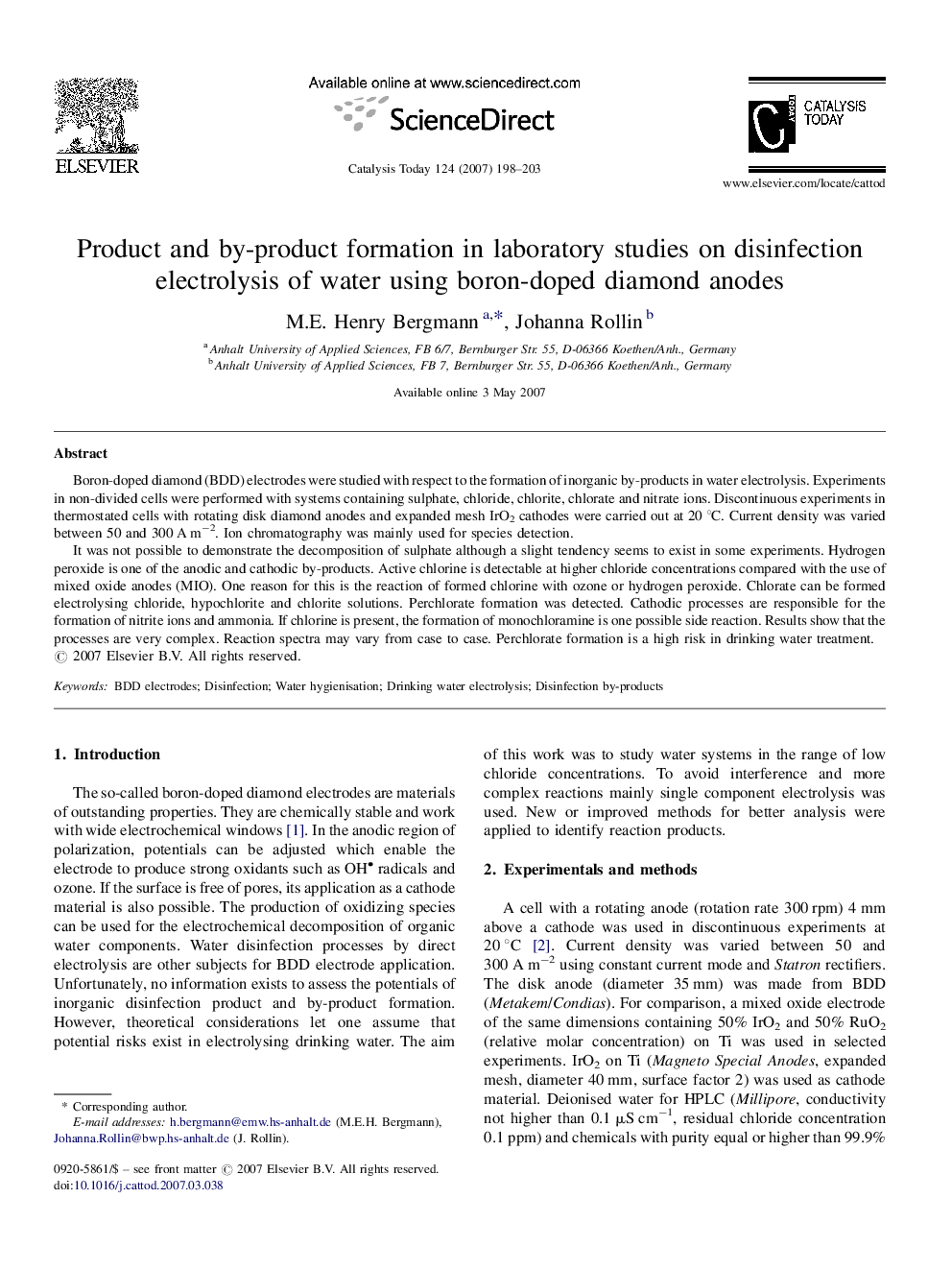| Article ID | Journal | Published Year | Pages | File Type |
|---|---|---|---|---|
| 58122 | Catalysis Today | 2007 | 6 Pages |
Boron-doped diamond (BDD) electrodes were studied with respect to the formation of inorganic by-products in water electrolysis. Experiments in non-divided cells were performed with systems containing sulphate, chloride, chlorite, chlorate and nitrate ions. Discontinuous experiments in thermostated cells with rotating disk diamond anodes and expanded mesh IrO2 cathodes were carried out at 20 °C. Current density was varied between 50 and 300 A m−2. Ion chromatography was mainly used for species detection.It was not possible to demonstrate the decomposition of sulphate although a slight tendency seems to exist in some experiments. Hydrogen peroxide is one of the anodic and cathodic by-products. Active chlorine is detectable at higher chloride concentrations compared with the use of mixed oxide anodes (MIO). One reason for this is the reaction of formed chlorine with ozone or hydrogen peroxide. Chlorate can be formed electrolysing chloride, hypochlorite and chlorite solutions. Perchlorate formation was detected. Cathodic processes are responsible for the formation of nitrite ions and ammonia. If chlorine is present, the formation of monochloramine is one possible side reaction. Results show that the processes are very complex. Reaction spectra may vary from case to case. Perchlorate formation is a high risk in drinking water treatment.
